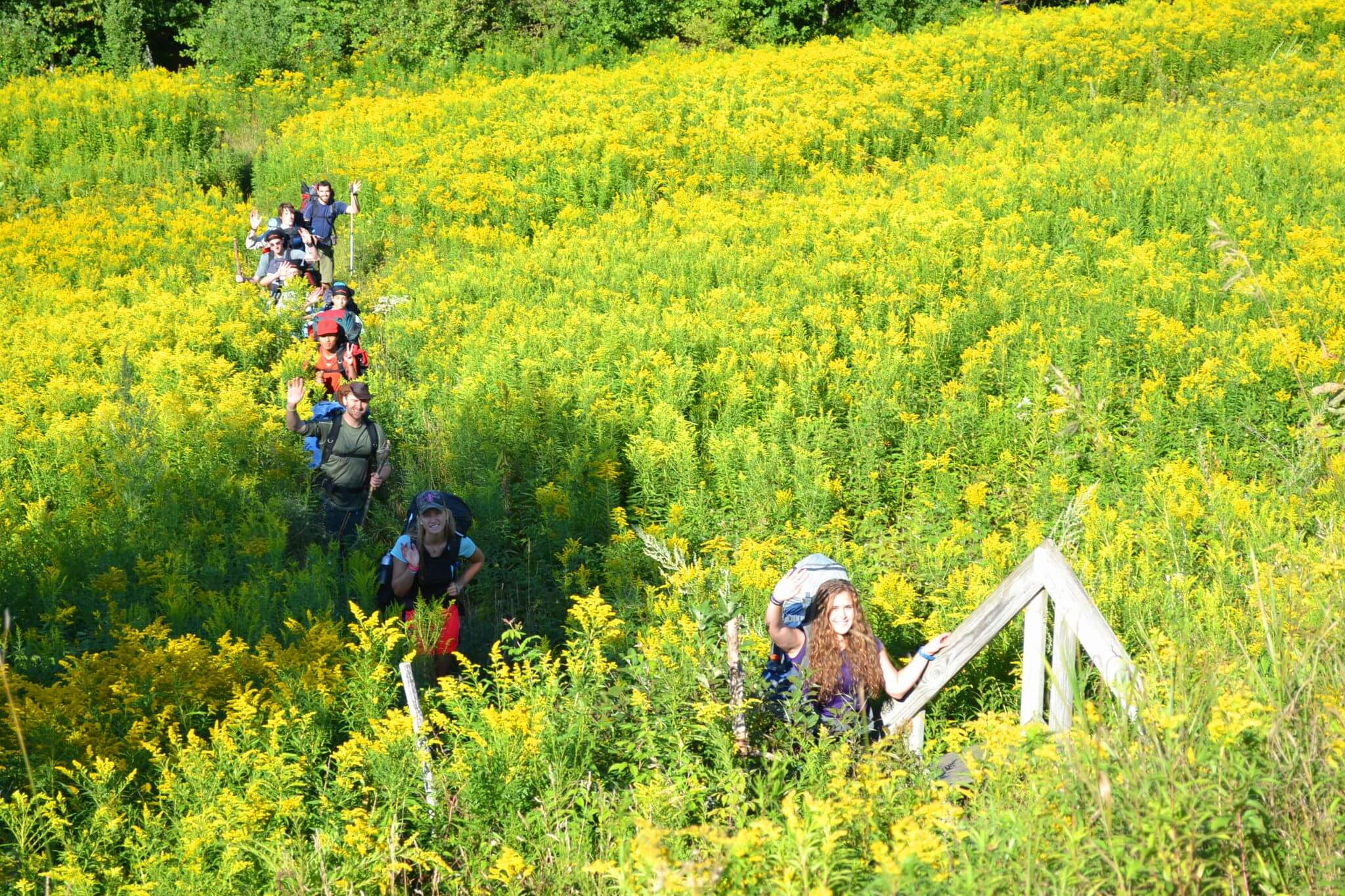There’s excellence in the air at the Green Mountains in Saxtons River, Vermont. Look and you’ll see a connected, diverse community of over 200 students from 20 US states and 21 countries — flourishing academically, emotionally, and physically as they prepare for college. On Vermont Academy’s 450-acres of land, nature’s majesty and mystique are their backdrop, a relentless source of inspiration.
This co-ed college preparatory boarding and day school — serving grades nine to 12 plus a postgraduate year — is gorgeous, thriving and historic (it is 144 years old ). But it is by no means dated. It is a school of the future.
Its forward-thinking approach is already evident in the interdisciplinary excellence it inspires. “Step on the basketball court or ice at 6 a.m. and again after school, and you will see athletes relentlessly determined in their pursuit of what Malcolm Gladwell called ‘deliberate practice.’ Those same athletes are also award-winning artists at Vermont Academy and in state competitions,” explains Head of School, Dr. Jennifer L. Zaccara, a trailblazer herself as the first woman to lead the school.
A community of scholars and athletes; scientists and writers; artists and engineers. A powerhouse in experiential learning. An unrivalled host for outdoor experiences such as hiking, skiing, and camping. It’s clear Vermont Academy offers students the opportunity to experience the joy of discovery, but how does it maintain its lustre year after year? Continuous innovation.

This school is an unrivalled base for outdoor experiences such as hiking, skiing, and camping. Source: Vermont Academy
Its strategic plan for 2021–26 is the product of months of discussion between faculty members, staff, the Board of Trustees, parents and alumni. Everyone was involved to determine what the school is and what it should become. Its four pillars were masterminded to do just that.
The school is wasting no time in getting students ready for the future. “Last fall, we hired a director for the Centre of Learning who guided students through testing that helped them identify where to best invest their energy toward the future,” shares Dr. Zaccara. “We will soon be announcing the hiring of a new Director of Outdoor Programmes who will train faculty and staff to incorporate outdoor programming into academics and student life.”
Let’s take a look at what else is in store in Vermont Academy’s vision for the future:
#1 Nurturing innovators, inventors, and entrepreneurs
The first pillar revolves around developing leaders by investing in the resources, facilities, and training needs for an effective, signature applied science, math, and technology curriculum. Teachers are developing programmes in applied math, science, and technology — including computer coding, data analytics, artificial intelligence, and other skills — and creating an innovation and entrepreneurship curriculum.
“Vermont Academy’s Capstone Projects allow seniors and post-graduates to work with on-campus and off-campus mentors to do original academic research and design a way to implement that research in real life,” shares Dan Burmester, Strategic Plan Programme Coordinator.
In another course, students build a product, test it with end users, then use this feedback to improve upon the product’s design. “Because Vermont Academy teachers use a Design Thinking mindset to create student-centred learning opportunities, courses such as these will continue to grow to meet our student’s needs,” he adds.
#2 Emphasise individualised learning
The second pillar focuses on the practices, opportunities, and spaces that enable students to find their passions and to become self-directed learners. It’s important that students become the authors of their own success, hence the academy is adding more courses on executive functioning and organisational skills.

This year, Vermont Academy will strengthen its varsity winter sports offerings through a player development approach. Source: Vermont Academy
“In our English department, courses exist where students may pick their own reading. In our performing arts programme, students create and produce original plays and compose original music,” shares Peter Ahlfeld, Director of the Centre for Learning. “In Robotics courses, students form a team and select whether they will be coders or engineers as they create robots for use in competitions.”
A “strengths-finder” exam now kicks off individualised learning plans held in the revamped Centre for Learning, responsible for student growth and learning. The existing My Action Plan for Success (MAPS) programme is also being further developed to refine each student’s aspirational goals.
#3 A stronger community
Opportunities for connection and excitement already abound at the academy. Ski hills are admired in the winter, zumba classes are conducted in the dance studio, outdoor fires are enjoyed at the Nick Grout ’03 Memorial Fire Pit, community lunches are a daily perk, and an annual winter carnival is frequently anticipated — amongst many more.
However, in true Vermont fashion, there’s always room for more. With the right resources, Vermont Academy is building a better environment to support student social-emotional growth and moral character development. It is also developing a “learning and living” culture; implementing diversity, equity, and inclusion initiatives; and will create more spaces for health and wellness.
#4 Embracing Vermont
By embracing its stunning surroundings, Vermont Academy gets to nurture each student’s knowledge, love, and appreciation for the land.
“In our classrooms, afternoon activities and trips help students grow and learn from our nurturing Vermont home. Our environmental science courses are routinely held outdoors where students explore the biology, chemistry and ecology of our campus,” explains Dr. Zaccara. “In the afternoons and on some weekends, students spend time in our campus and off-campus Vermont wilderness, developing outdoor and social-emotional skills. Further, students may participate in an early school year hike on Vermont’s world-renowned Long Trail. During this experience, students bond with faculty and one another, form life-long friendships, and grow as people.”
To learn more about how Vermont Academy is creating a student experience that breaks the confines of traditional classrooms, schedule a tour and secure your place here.











